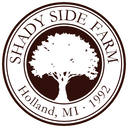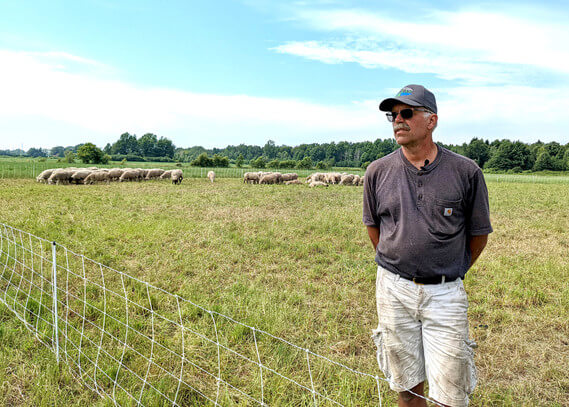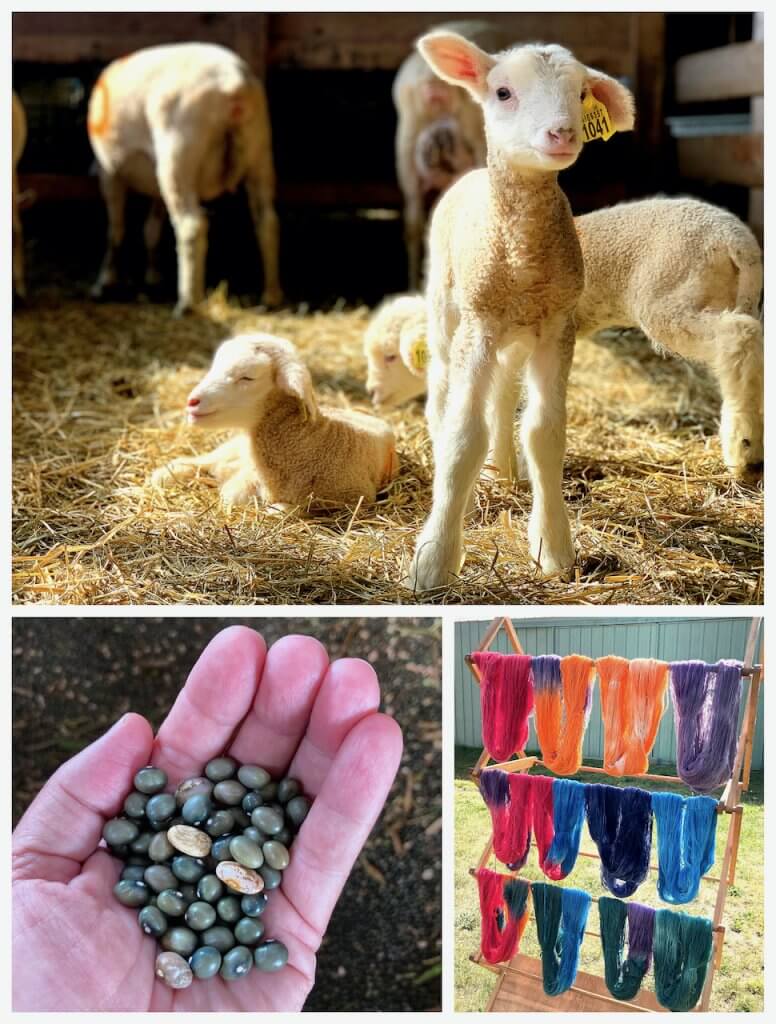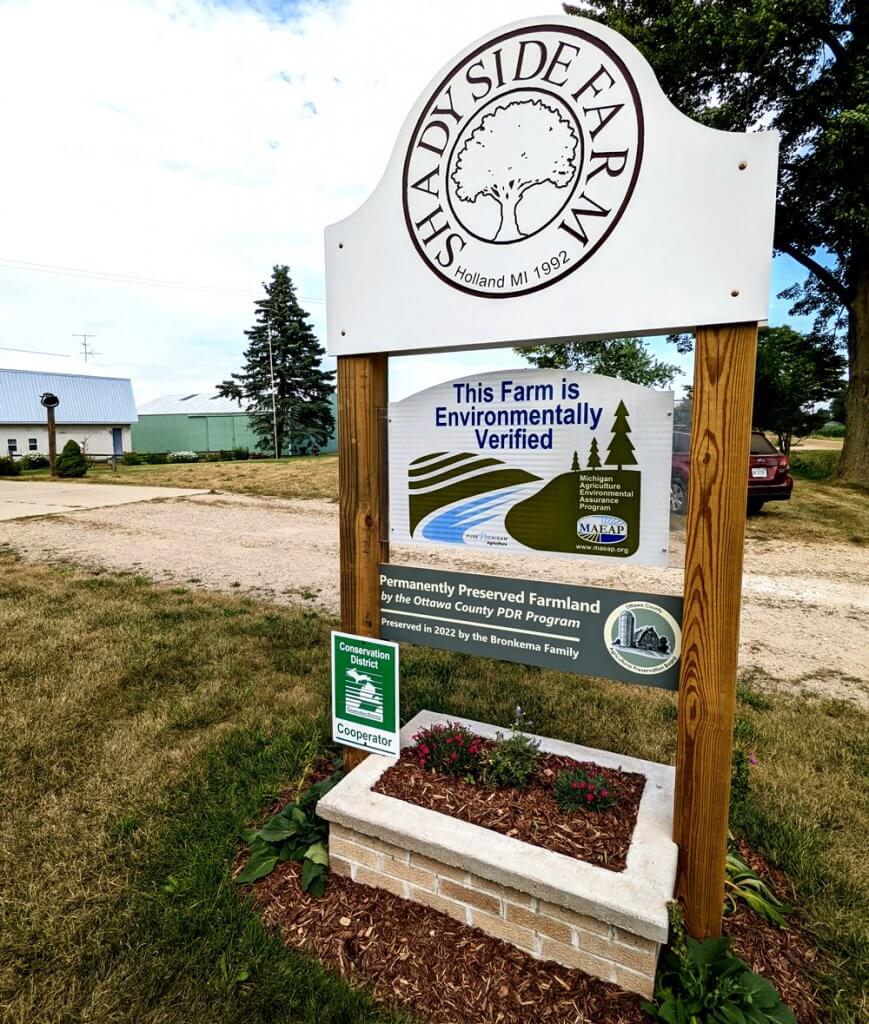Article by Rich C. Lakeberg, Ottawa County Department of Strategic Impact (posted with permission)
The West Michigan growing season may not have started yet, but the Ottawa County Agriculture Preservation Board is celebrating a bumper crop after officially protecting its sixth property, Shady Side Farm, with the Purchase of Development Rights (PDR) program. This agreement guarantees the land will continue to be used for agricultural purposes or remain in a natural state in perpetuity.
“I am so glad to see this program taking off,” said farm co-owner and operator Mike Bronkema.
This moment has been 30 years in the making. Mike Bronkema and his wife, Lona, bought the property in 1992 – long before the County had a farmland preservation program – from a farmer that wanted to see his land continue to be used for agriculture.
“He wanted us to buy the farm because he knew we were going to farm it instead of subdividing it,” said Bronkema.
Covering 123 acres over five parcels, Shady Side Farm is unique because of the diversity of products its operators produce, including beef, lamb for meat and wool, organic dry beans, and grains including corn, einkorn, spelt, and barley. The Bronkemas do all of this while employing conservation practices such as planting tree rows to prevent wind erosion, creating pollinator habitat, grass waterways, buffer strips, cover crops, rotational grazing, and composting. The farm has been MAEAP (Michigan Agriculture Environmental Assurance Program) verified since 2004.
“Farmland preservation is just an extension of some of those conservation practices,” said Bronkema. “They’re interconnected. One feeds the other.”
Shady Side Farm is the first Olive Township operation to be protected through the County’s PDR Program. To be able to apply for the program, a property must be within a participating municipality. This means the city or township where your property is needs to have adopted a resolution supporting the program before you can even begin the process. So far, 10 townships – including Olive – have approved such a resolution.
“Our township wasn’t on board with it right away,” said Bronkema, reflecting on the process. “We had to work our township up to it and get it (the resolution) approved before we could go through the … program.”
Ottawa County’s Agriculture Preservation Board continues to have conversations with the remaining townships and cities to garner more support for use of this particular tool.
Donations and grants key
The Bronkemas’ conservation practices and the uniqueness of the property helped make Shady Side Farm a strong contender for preservation. But what pushed it to the finish line was a grant from the Michigan Department of Agriculture and Rural Development.
No County monies are used to fund PDR. This program is completely funded through a combination of state and/or federal grants, private donations, and landowner contributions.
“Obtaining the grant funding made preserving Shady Side Farm possible,” said Farmland Preservation Analyst Julie Lamer. “We cannot stress enough how important grants and private donations are to the continued success of this program.”
More about how PDR works
Landowners who choose to participate in the program can protect their farmland by selling the development rights to the County, creating a permanent agricultural conservation easement. Landowners still own the land, retain all rights associated with it, and are compensated for lost development potential.
“PDR is a way for farmers to protect their farms from development so that future generations can farm and have food,” said Bronkema. “I’m extremely grateful that this property will remain a farm long after I’m gone.”
To learn more about the Farmland Preservation Program, or to give, visit MiOttawa.org/Farmland or call 616-738-4852.








